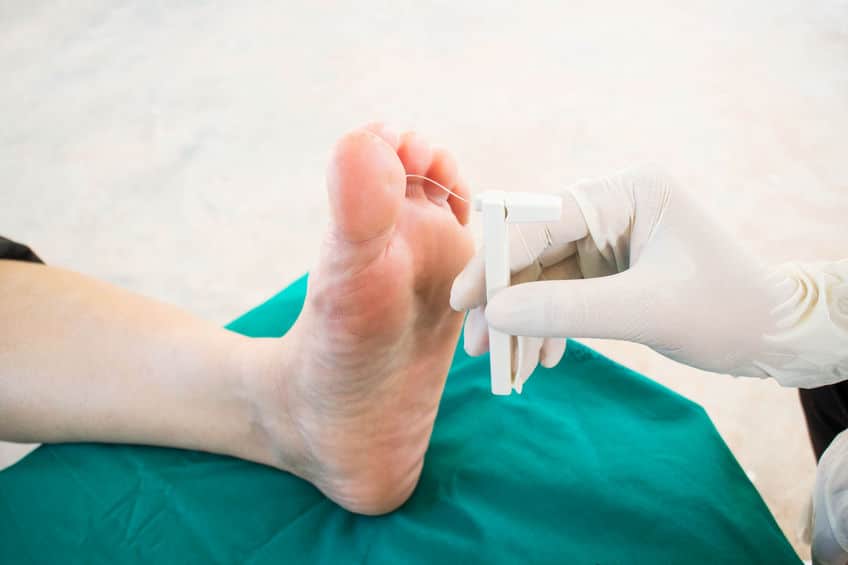Charcot Foot & Diabetes

Diabetes is a significant problem in the United States. While diabetes causes many adverse effects on one’s body, the most commonly-hospitalized reason involves the foot. Diabetes causes nerve damage and poor circulation, which is a catalyst for most foot problems. In addition, diabetics are unable to heal and fight infection normally.
One of the complications caused by uncontrolled diabetes is known as diabetic Charcot neuropathy or Charcot foot. Commonly unrecognized until it gets severe, Charcot foot can deform the shape of the foot and potentially lead to disability. There are many treatments available, but here at Warner Orthopedics & Wellness, we know one of the best treatments is prevention. If this is not recognized and treated early, amputation can happen.
What is Charcot foot?
Charcot foot is a bone deformity that is a direct result of neuropathy in the foot, a decreased sensation of pain or feeling. With a more diminished sense of pain and balance, those with Charcot foot tend not to notice as the disease’s effects as they worsen. As Charcot foot develops, it weakens the bones in the foot. This weakening becomes a severe problem since the affected person will continue to walk on the foot and cause trauma and fracturing. As a result of this continued stress on weakened bones, the joints within the foot collapse and cause a visible deformation usually at the arch of the foot. The Charcot foot is a result of poor healing and continuous trauma.
What causes this?
The weakening of the bones and the lack of sensation are the amplifiers of Charcot foot. This disease weakens the bones in the foot, so it’s more common for a sprain, fracture, dislocation, etc., to occur. Neuropathy decreases the ability to feel an injury and a bone break or severe sprain. As one continues to put pressure on the damaged foot, neuropathy prevents the affected person from being aware anything is wrong, and further damage occurs.
 How do I treat it?
How do I treat it?
At its core, Charcot foot is a broken bone, so treatment methods are similar to that. Pressure needs to be taken off the foot, while the bones heal naturally. Special shoes or casting will be required to achieve this in the early stages. However, if Charcot foot has progressed enough that a deformity is noticeable (usually a swollen area on the arch or ankle of the foot), surgery may be the best option. The best way to treat Charcot foot is to catch it early before any severe damage occurs. If you notice problems, tell your doctor immediately. If you have long-standing diabetic neuropathy, you should seek professional evaluation of the foot regardless.
How do I prevent Charcot foot?
If you have diabetes, you’re more susceptible to this condition, so daily monitoring of your feet is imperative. Any sensation of pain – no matter the severity – should be brought up with your doctor. Redness and foot swelling are early indicators, so look out for these signs as well. If you’ve been diagnosed with neuropathy before, be very cognizant of the conditions of your feet.
Charcot foot is caused due to a lack of the person affected knowing something is wrong. To combat this, one needs merely to be aware of their feet and check them daily for any abnormalities, especially if you have diabetes or neuropathy. Any mild sprain, misstep or impact to the foot should prompt a visit to you orthopedic surgeon. Otherwise, an injury will be missed.
For more information, contact Warner Orthopedics & Wellness today!
ABOUT THE AUTHOR
Dr. Meredith Warner is a board certified, Fellowship Trained Foot and Ankle, Orthopedic surgeon practicing in Baton Rouge, Louisiana. Dr. Warner is committed to offering her patients an accurate diagnosis along with a comprehensive treatment plan in order to get them back to a pain-free life. Dr. Meredith Warner specializes in the treatment of orthopedic issues, providing operative and non-operative treatment plans of orthopedic problems, including musculoskeletal pain such as chronic back, neck and foot pain, reconstructive surgery of the foot and ankle, arthritis, diabetic, hammertoe, bunion, wound care, work injuries, fitness and nutrition and osteoporosis issues.





